The Hindu religion is a set of orthodox code of conduct. The conservative ways of Hinduism are mainly divided into 2 elements that differ human being from animals. Firstly, the education or vidhya and second being the religious practices or the Samskaras (Sanskara). Without education, the Samskaras are incomplete. Therefore, the religious conduct is only laid by the people who are highly knowledgeable. The people with the right code of conduct are the ones, who are polished, refined, balanced with the right qualities and civilized in behaviour. The various Sanskaras associated with a Hindu person is his real wealth for entire life, without the Sanskaras, the man is not considered fit to be called civilized. These Sanskaaras are acted upon in order to achieve physical, mental, spiritual and behavioural balance for the betterment in life. Here are 20 sanskaras out of 40 that are laid in the Gautama Dharmashastra:
Garbhadhana
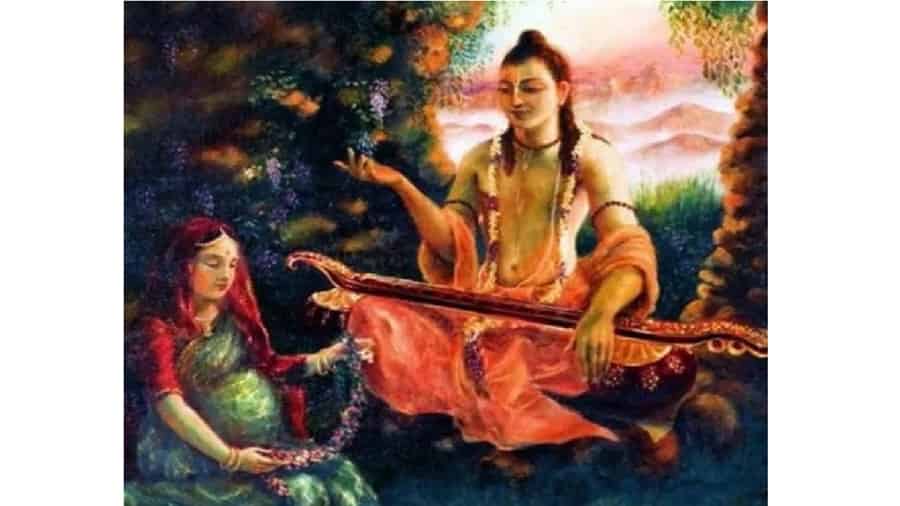
An effortless and the natural course of conception are all about Garbhadhana. It is a prenatal ritual that is performed during conception for the birth of a good child. It is believed that both father and mother must have good thoughts while conceiving in order to produce a better child. So it is the process of getting good to better through Garbhadhana Samskara.
Pumsavana
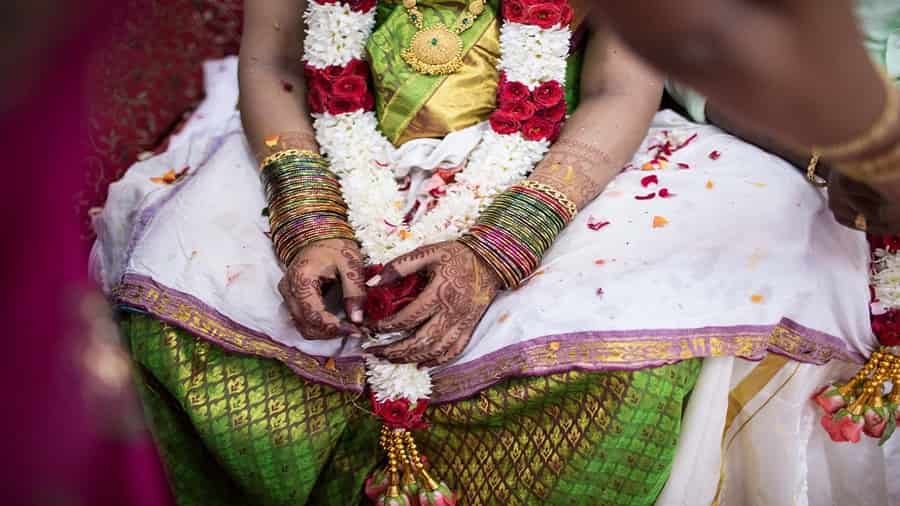
This ritual is practiced once the pregnancy is definite, in the third or fourth month of pregnancy. It is essential that the expectant mother remains sound and healthy for the better growth of the child inside the womb. The term Pumsavana was mentioned in the Atharvaveda which meant the birth of a male child. This ritual is usually carried for the birth of a male child or to avoid the risk of miscarriage.
Simantonnayana
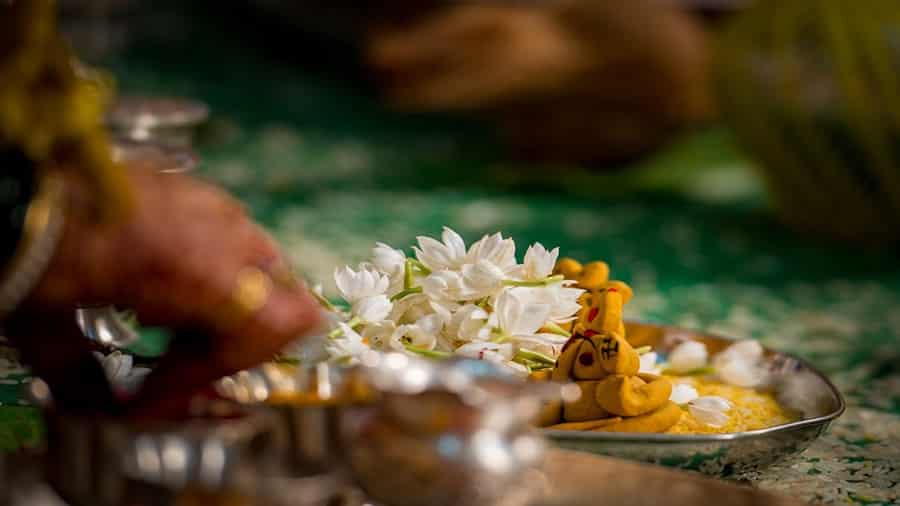
During pregnancy, it is essential to lift up the mood of the pregnant woman. This rite is performed during the fifth month of pregnancy to keep the pregnant mother in a good state of mind. This indirectly results in the well-being of the coming child. The term literally indicates that the husbands part the hair to put vermilion on their wife’s head and fire ceremony (yajna) is performed. Puja is offered and it is basically a social festivity in nature. The pregnant lady receives gifts in the form of fruits and rice. Due to pregnancy, the woman goes through a number of hormonal changes which results in mood swings, depression etc. In order to avoid these things and keep the mother around happy thoughts, Simantonnayana Sanskaara is performed.
Sosyanti Homa
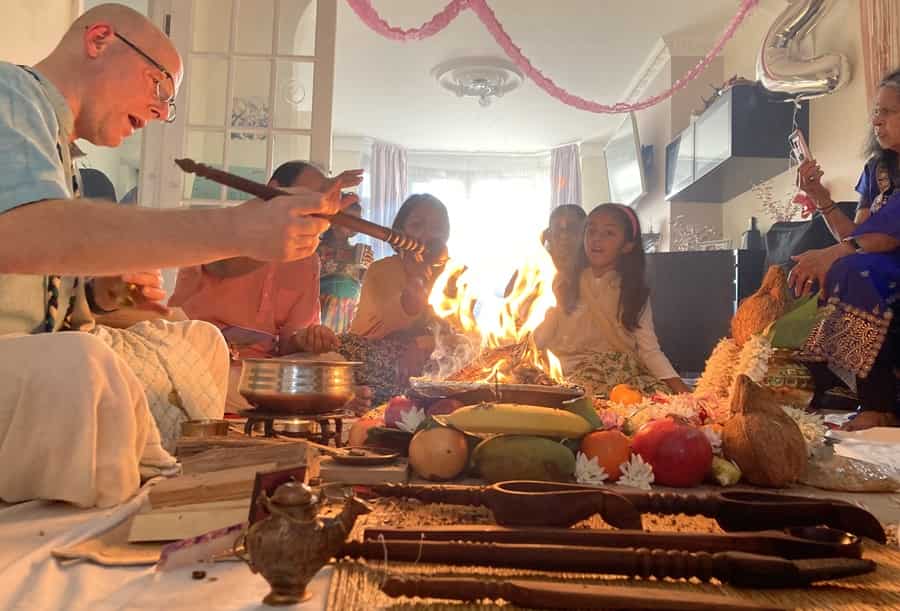
This Samskara is performed for the safe delivery of the child. It is believed that the puja performed just before the delivery of the child, ensures healthy and active childbirth without any complication.
Jatakarman
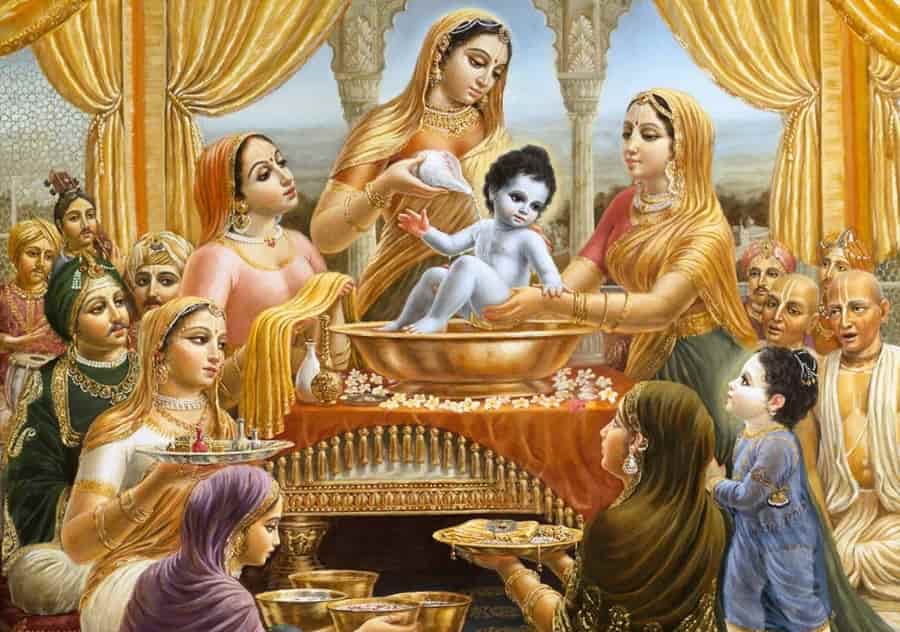
This ritual is performed on sixth to eleventh days of the newborn’s arrival. The rites are conducted to welcome the child safely into this world. It is said that the house is purified by performing puja to ensure clear environment in the house. The protector of the children, Goddess Shashthi is worshipped to keep the newborn free from any sort of diseases. Jatakarma Sanskar is for the well-being of the newborn.
Namkaran
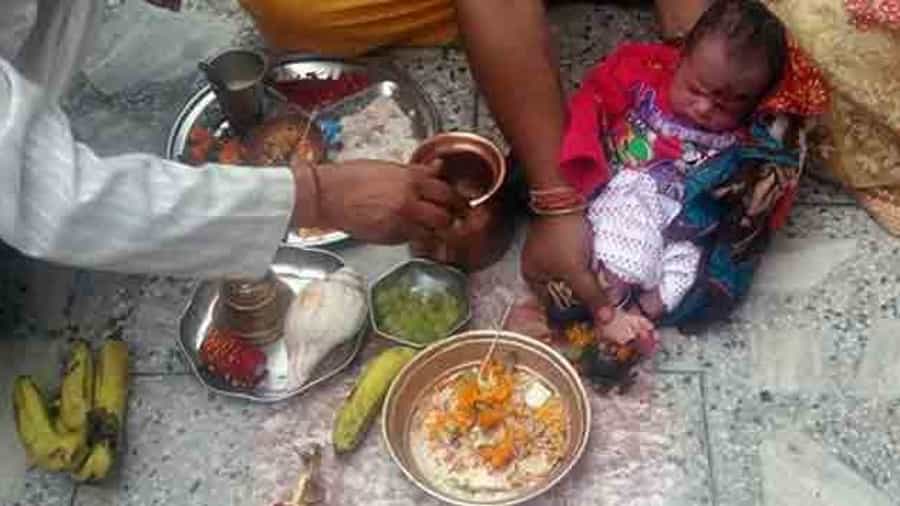
The naming ceremony or Namkaran is the ritual in order to decide a suitable name for the newborn on the basis of an astrological chart, position of the moon at the time of birth and the 27 nakshatras. This ritual begins with a puja, followed by cradling the baby in the cradle and naming him.
Annaprashan
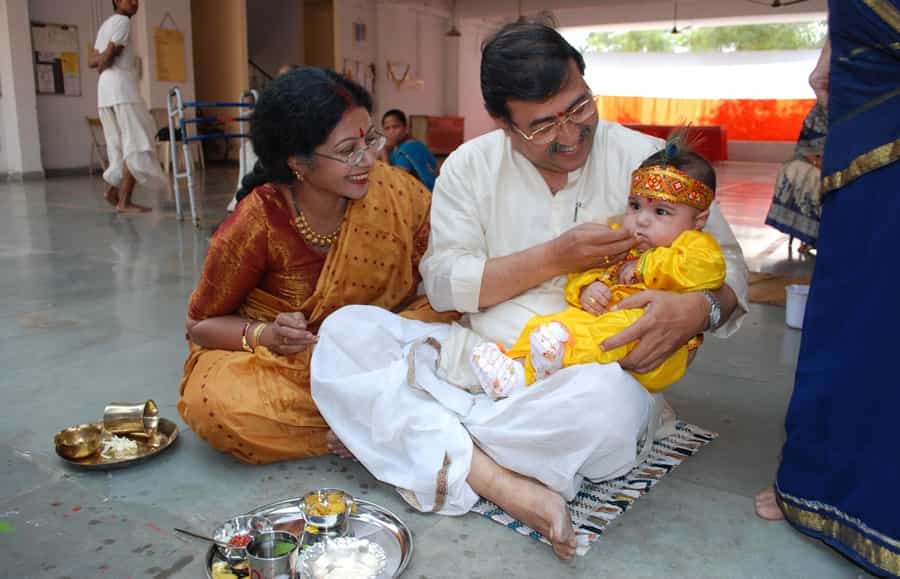
The first rice eating ceremony is called the Annaprashan. In this ritual, the newborn is fed with the grains that is the solid food for the first time and is usually performed in the 6th month of the baby. Puja is performed in the temple or at home with the fire ceremony and chanting of mantras. The sweet rice preparation is made as Prasada for God and the same Prasada is fed to the child. This a great reason for festivity, where many people are invited for lunch or dinner along with the child who takes his first rice.
Nishkramana
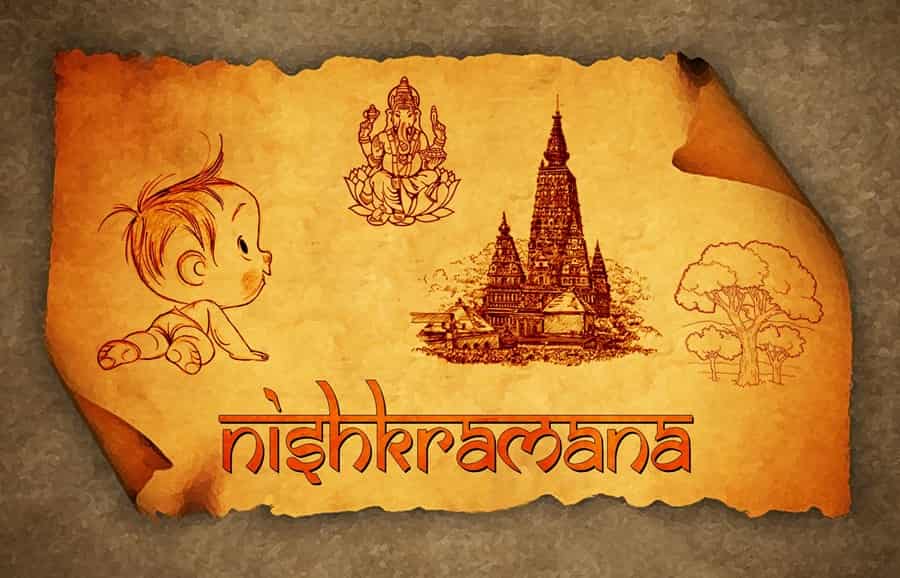
This ritual is performed after forty days of the birth of the baby when he is taken out of the house for the first time and witness the sun. This rite signifies that the prayers are being offered to all the Gods and Goddesses for the protection of the child for the rest the life.
Mundan
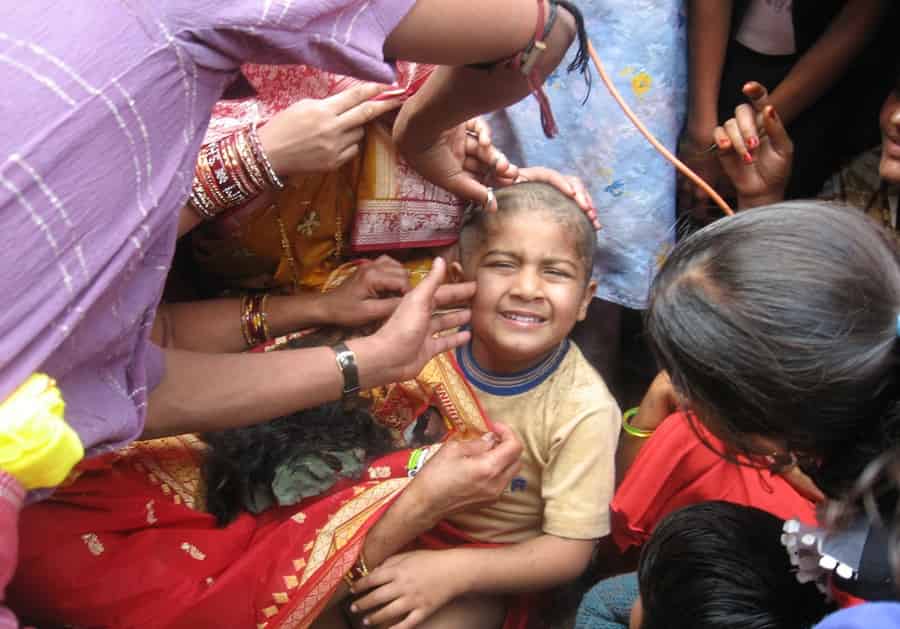
Mundan is a Samskara that is performed at various times by various families. But the actual time of mundane ceremony is around fourteen months of a child when the soft spot on his head disappears. Hymns and mantras are chanted and Yajna is performed during this ceremony. Better understanding and power and long life are the main attributes for which this ceremony is conducted. The child’s head is shaved for the first time and is known as Choul or Mundan. This is celebrated amidst family, friends, and priests.
Karnavedha
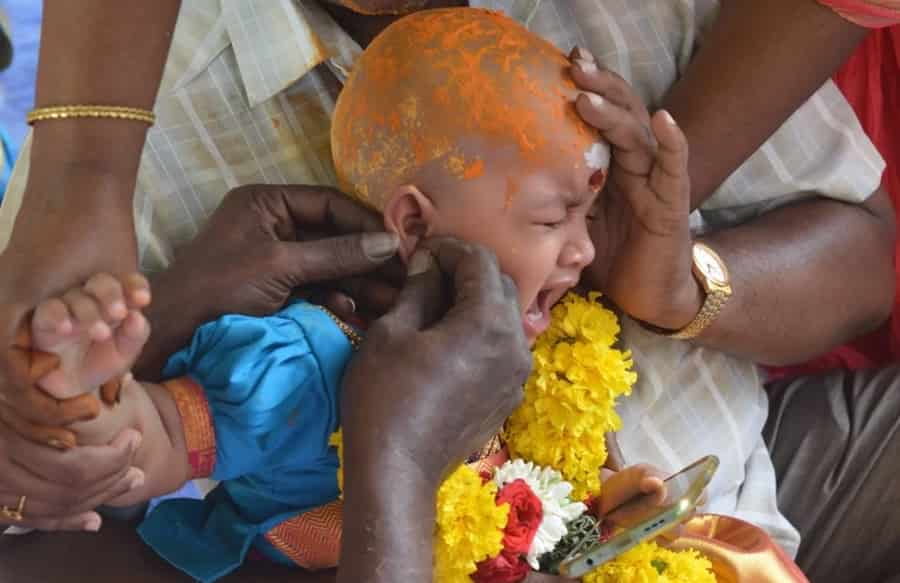
After the Surya puja begins, the father of the child chants a mantra in the right year of the child, after which the ear is pierced. This ceremony is usually done for the girls as the boys fear to appear as feminine if the ears pierced. But during Upanayana ceremony, piercing ears of the boys is also a custom, which differs from one family to the other. It is performed usually in the 3rd or 5th year.
Chudakarana
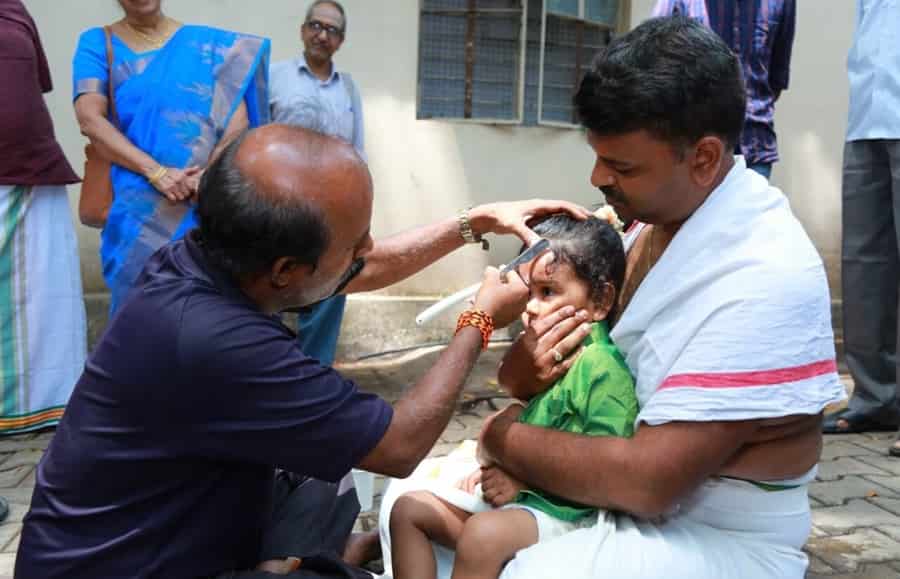
This is usually performed in the 1st or 3rd year of the child. The tonsure ceremony is cutting a small part of hair from the scalp as a part of devotion or humbleness towards the religion.
Vidyarambha
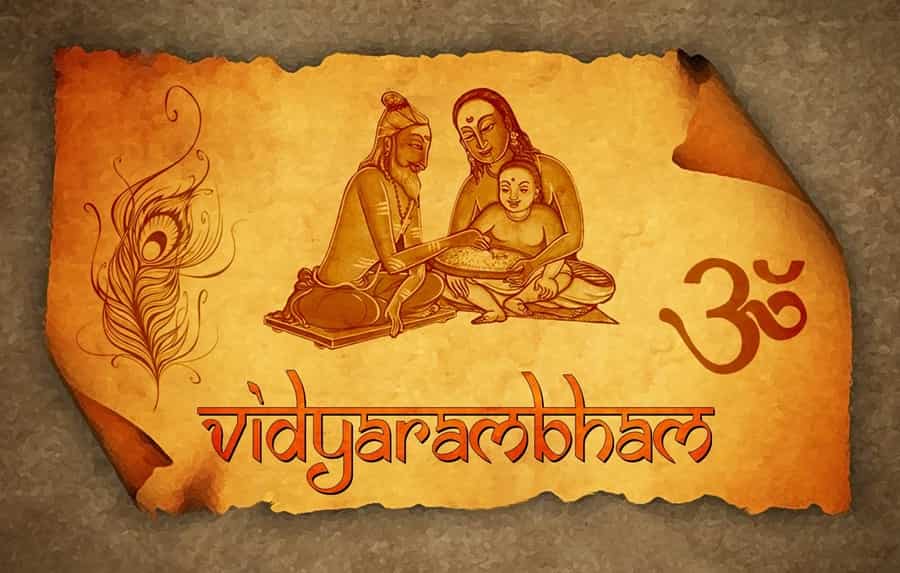
When the Mundan ceremony is conducted, in the 3rd or 5th year of the child, Vidyarambh Sanskar can also be performed. It denotes the learning of the first letter of the alphabet. In this ceremony, the guru or the Brahmin offers puja to the Goddess of Knowledge, Saraswati and teaches the first lesson to the child.
Yagyopaveet
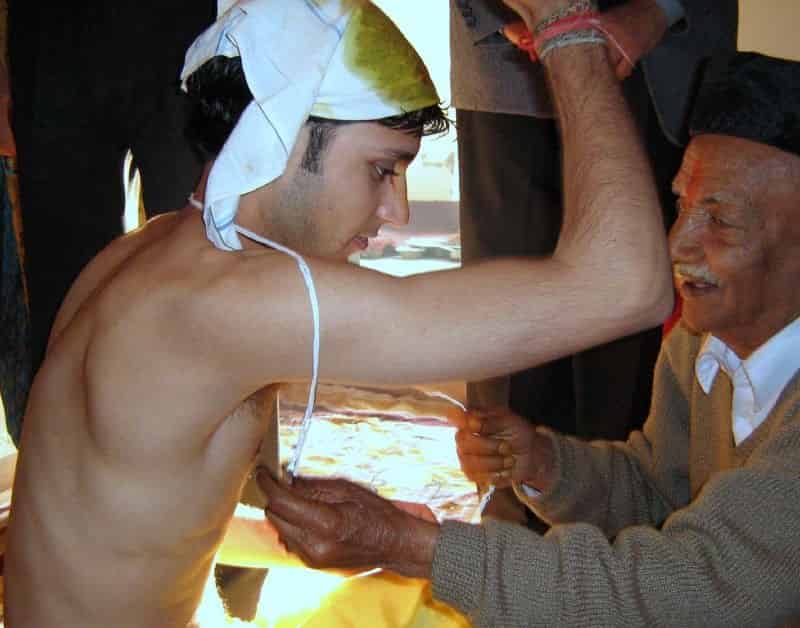
This ritual is an important part of a Hindu male’s life. The sacred thread ceremony symbolizes the holy and fresh vision that is offered to the child by giving Gayatri Mantra by the Guru for knowledge or Buddhi. It is also called Upanayana which means a new vision to see the things differently in form of spiritual and intellectual ways. This ritual is also the second birth of the child. Here the child performs the pujas along with the Priest and is directed towards leading a good life according to the rules of Dharma.
Vedarambha
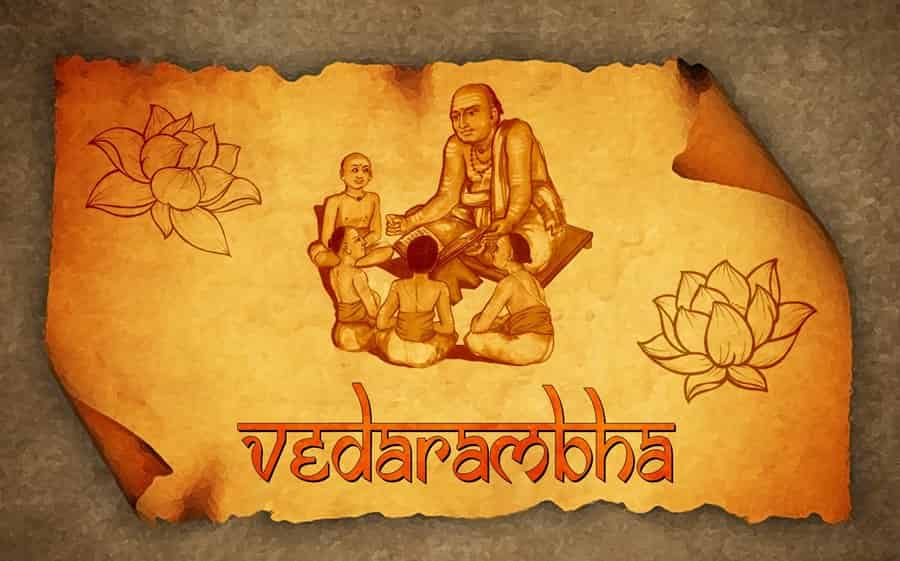
Before the commencement of the study of the Vedas and its various terms and related matters is when the Vedarambha is performed. Although, today hardly any children show interest in the study of Veda and in rare cases, this ceremony is conducted.
Keshant
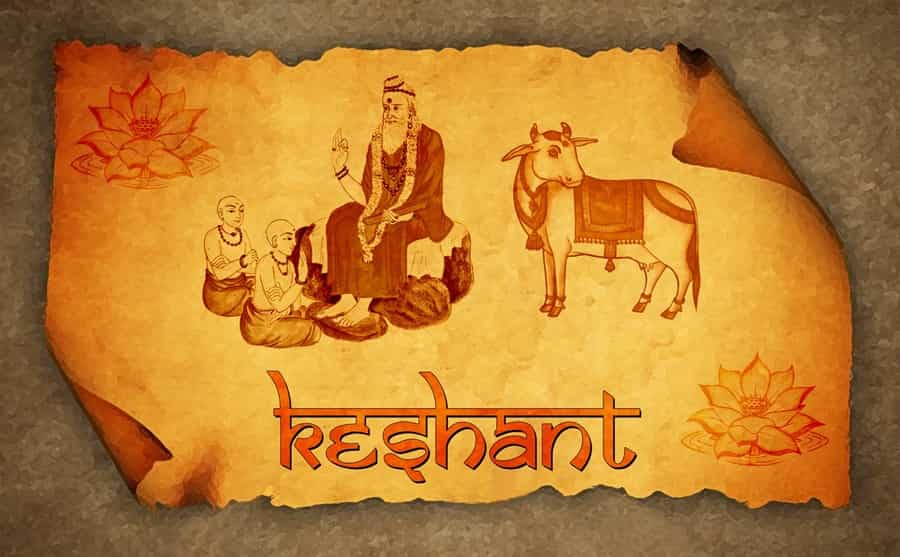
The journey of the boy to manhood or the girl to a lady is what Keshant is all about. This ritual is performed when the boy shaves his beard for the first time. Similarly, in case of girls the start of menstruation calls for a ceremony where they alter dress with a sari. However, this ritual is not followed in all the families.
Samavartana
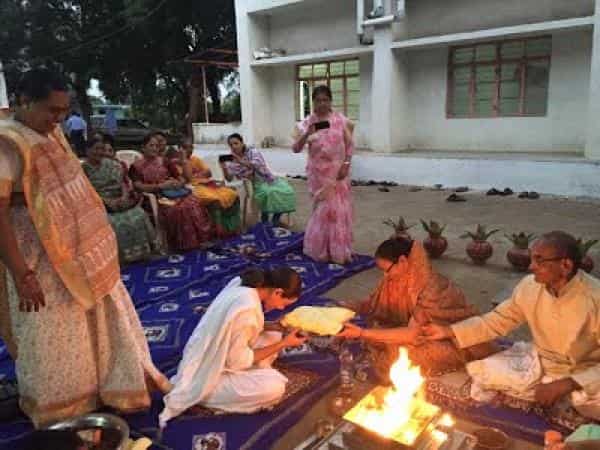
This ceremony is performed when the child completes his education from the school and returns home. Earlier the children used to be a part of Gurukul where they used to stay and acquire knowledge on varied subjects. For this, they had to stay away from the house for years after years. They used to sustain the tough conditions in the Gurukulas and return safely with an intellectual and spiritual bent of mind. Thus, Samavartana Samskara is performed.
Vivah
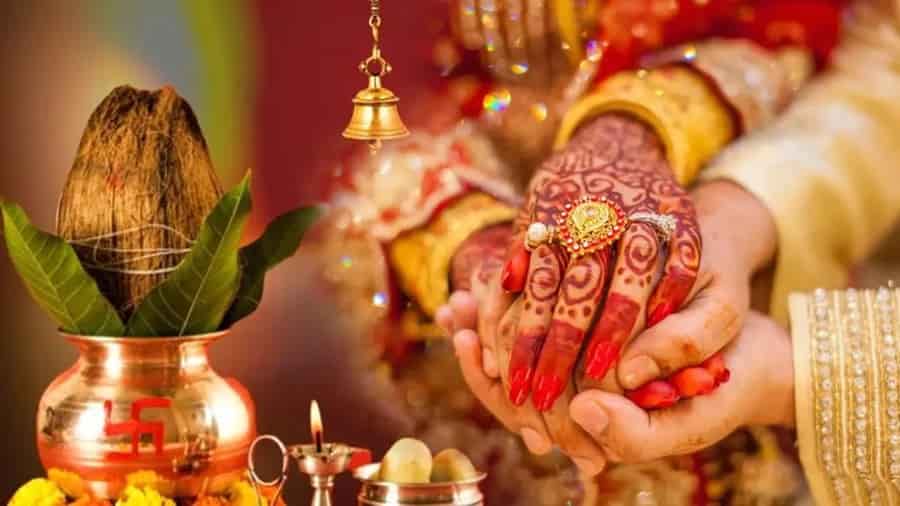
To mark the commencement of the household disciplines, Vivah was performed. Today, the child marriages are completely banned but, in earlier years, child marriage was performed. Vivah is the most precious bond of strength, love, understanding, power, between the man and the woman. It denotes the commitment of a man toward the family. Vivah is performed amidst guests, relatives, family and acquaintances. Most importantly, it is believed that all the Hindu Gods and Goddesses connect to bless the couple getting married.
Vanaprasthashrama
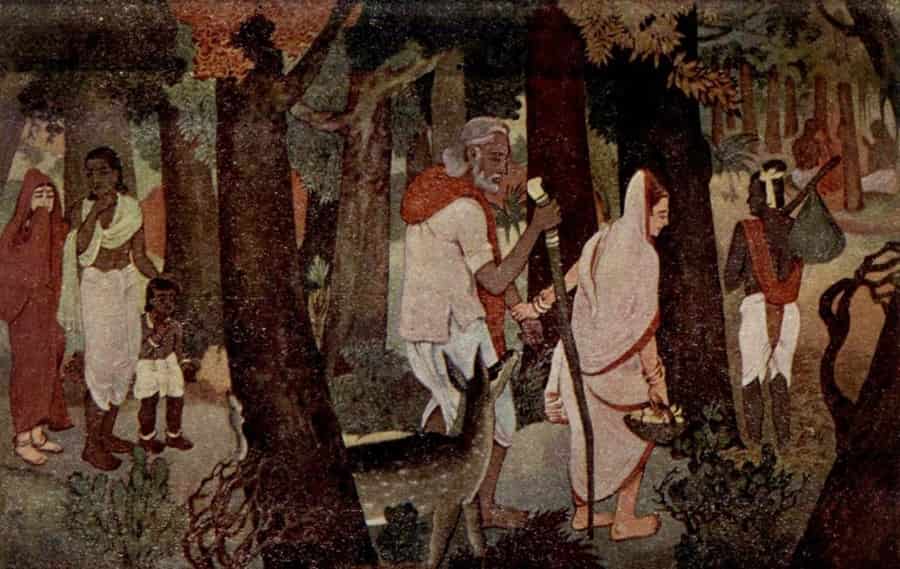
As per the title Vanaprasthashrama, it is not required to head towards the forest but, a man enters a definite stage of life when half of his desires and wishes are fulfilled and he devotes all his time in social work, charity, worshipping and in helping others.
Sanyaashram
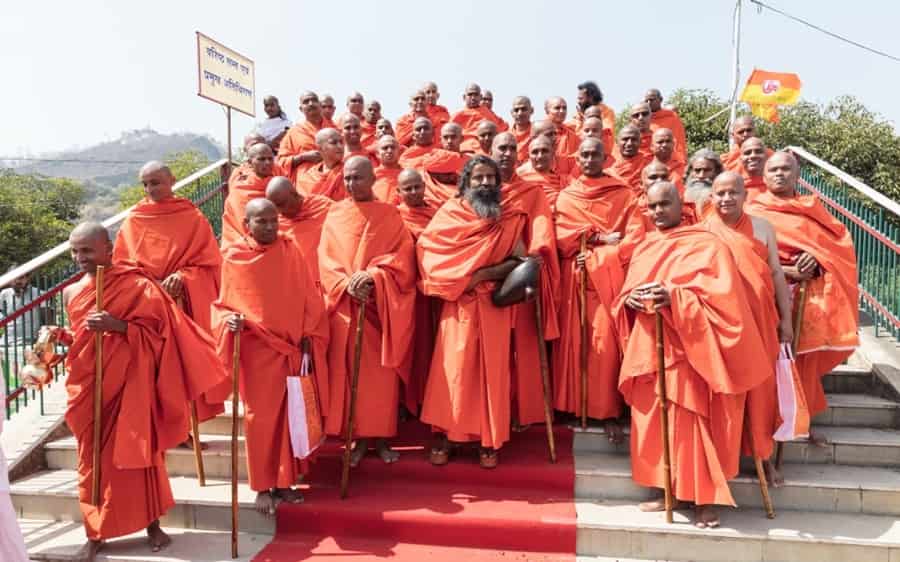
This is performed when the man renounces all his worldly ties and beings the journey of meditation. He seeks the questions of life from the God and spends his time in the company of God by singing, meditating, praying and chanting His hymns and mantras. However, sanyasharam can be entered in any stage like Brahmacharya, Grihasthashrama etc.
Antyesti
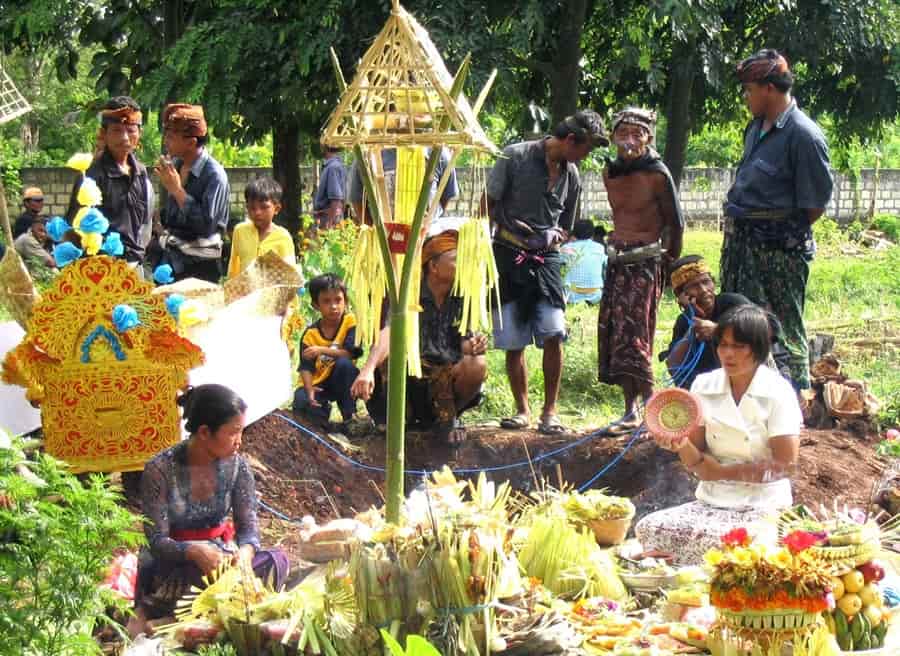
The last stage of human or the last ritual is after the death of a person till 15days when the prayers are offered to the God for the comfortable journey of the soul. After the cremation of the body, the rites are offered to the God and his ancestors. At the end, food is served to the poor and the relatives.
Although, there are many more Sanskars that is involved in the Hindu religion, the above 20 Samskaara of Hindu are the primary ones.
Also Read:

 Call
Call WhatsApp
WhatsApp Enquiry
Enquiry